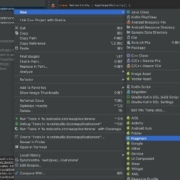My first draft of hierarchy traversing component got some serious feedback, and it’s time to make some changes before moving on to the next challenges. Hierarchy traverser is not optimal yet as it uses tail-call recursion and it’s easy to run to Stack Overflow with it. This blog post solves this problem and prepares for the next challenges like node cache and continue-from-given-node.
Problem: Running to Stack Overflow
As reader Ants pointed out then, .NET runtime doesn’t always optimize tail-call recursion and using this simple piece of code, it’s possible to run to Stack Overflow fast.






 In this post, I want to show off another way to deal with the same problem, but without using graph queries and using only the capabilities that we have in RavenDB 4.1.
In this post, I want to show off another way to deal with the same problem, but without using graph queries and using only the capabilities that we have in RavenDB 4.1.



